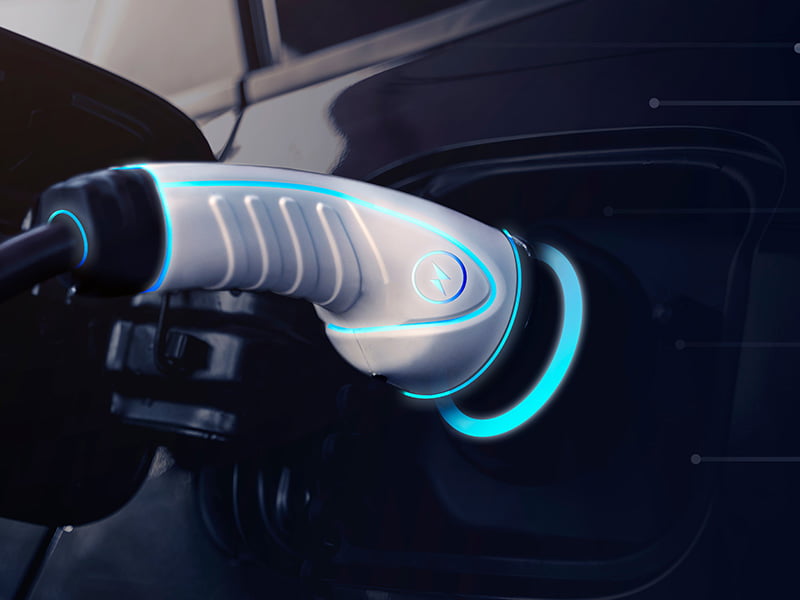The federal government’s electric car discount bill is set to pass through the Senate after the Greens and Independent Senator David Pocock secured changes to lessen support for plug-in hybrids.
The change proposed by Senator Pocock will remove plug-in hybrid vehicles from the fringe benefit tax exemption from April 1, 2025. Following the sunset of plug-in hybrids, the exemption will apply to battery electric and hydrogen fuel cell electric cars.
The Greens also secured a commitment that the government’s fleet procurement policy will prioritise zero-emissions electric vehicles “by removing plug-in hybrid vehicles except in exceptional circumstances”.
With the Greens and Senator Pocock together holding 13 seats, the government requires their support to pass bills through the senate. They have jointly tabled two amendments to the bill on Tuesday morning, which will be supported by the government.
As a part of the deal, the Australian Taxation Office is expected to “issue guidance on when household charging technology is able to be included within [fringe benefit tax]-exempt vehicle packages”, according to the Greens.
The amendments also require a review of the electric car discount’s effectiveness at encouraging uptake “within 18 months after the end of the 3 years from the commencement”, according to the tabled amendment.

In its original form, the federal government said the discount would cost $205 million over the forward estimates.
The Electric Car Discount Bill 2020 was introduced on the first day of parliament under the Albanese government, delivering on an election commitment.
The bill proposes scrapping the fringe benefits tax on electric vehicles provided by employers to their employees that have a retail price below $84,916. It will apply retrospectively from July 1.
For example, an employer could save up to $9000 per year if they provided an EV worth $50,000. An individual using a salary sacrifice arrangement to pay for the same model would save up to $4700 annually.
Treasurer Jim Chalmers said the government has worked in good faith with the crossbench on the amendments which “are a win for motorists, a win for businesses and a win for climate action”.
“It’s disappointing but not surprising that the Opposition has chosen to vote against lower taxes for Australians and lower emissions,” the Treasurer said.
In September, Greens Leader Adam Bandt released figures produced by the Parliamentary Budget Office that showed removing plug-in hybrids from the electric car discount bill would save $976 million over the decade. With the amendments to the bill now secured, much of these savings are expected to be realised.
“The government fleet will go electric, and when these cars are sold second hand, it will help bring the cost down of EVs for everyday people,” Mr Bandt said.
“By limiting handouts to petrol cars and accelerating support for electric vehicles, the Greens in balance of power have pushed the government to go further and faster on climate. This shows the power of the Greens in pushing Labor to go further and faster on fossil fuels.”
Senator Pocock is equally opposed to the inclusion of plug-in hybrids, describing it as a fossil fuel technology.
“We shouldn’t be using taxpayers’ money to fund legacy fossil fuel technologies. The opportunity is to broaden access to clean, efficient technology of the future,” Mr Pocock said.
“My position is that plug-in-hybrids are a fossil fuel technology that should not be subsidised by taxpayers in this Bill. This Bill provides tax incentives to mostly wealthier Australians through fleet vehicles, which will create a much-needed second hand EV market in a few years’ time.”
As a part of the senate inquiry into the electric discount bill, the Australia Institute similarly called for plug-in hybrids to be excluded.
Electric vehicle takeup in Australia is growing but remains low. Last month, the Electric Vehicle Council found that sales of new plug-in electric vehicles was 282 per cent greater between January and September than in 2020, but still represent just 3.38 per cent of all new vehicle sales.
Do you know more? Contact James Riley via Email.


The Greens demonstrating that ‘you have to break a few eggs to bake a cake’.
So they don’t like PHEV’s – OK we get it, but 3 years is not a sufficient transition period to go Electric. At this point in time the PHEV should have been the ‘next step’ for most Australians looking towards lower emission driving and here’s why. Sales in Australia for electric vehicles are super low, the cost is affordable only for a smaller percentage of Salary earners. So effectively the management troubleshooting of vehicle range issues (Australian conditions), battery charging, battery supply & replacement hasn’t yet been developed to simply switch from ICE to EV – it’s going top take much longer than 3 years. As for range, in Australia the PHEV is a better solution for longer range travel. Most ‘outdoor’ Australians want to throw their boat or Caravan on the back and travel some 200+ km. Given that adding this kind of weight to a vehicle will reduce range substantially, then one would expect recharging on the journey. So what we are now facing is a huge bottleneck of problems to solve. Keeping the PHEV’s around longer would have enabled the entire playbook to be developed and we could have transitioned to Electric with less ‘ouch’ than what the Greens would have us do now.